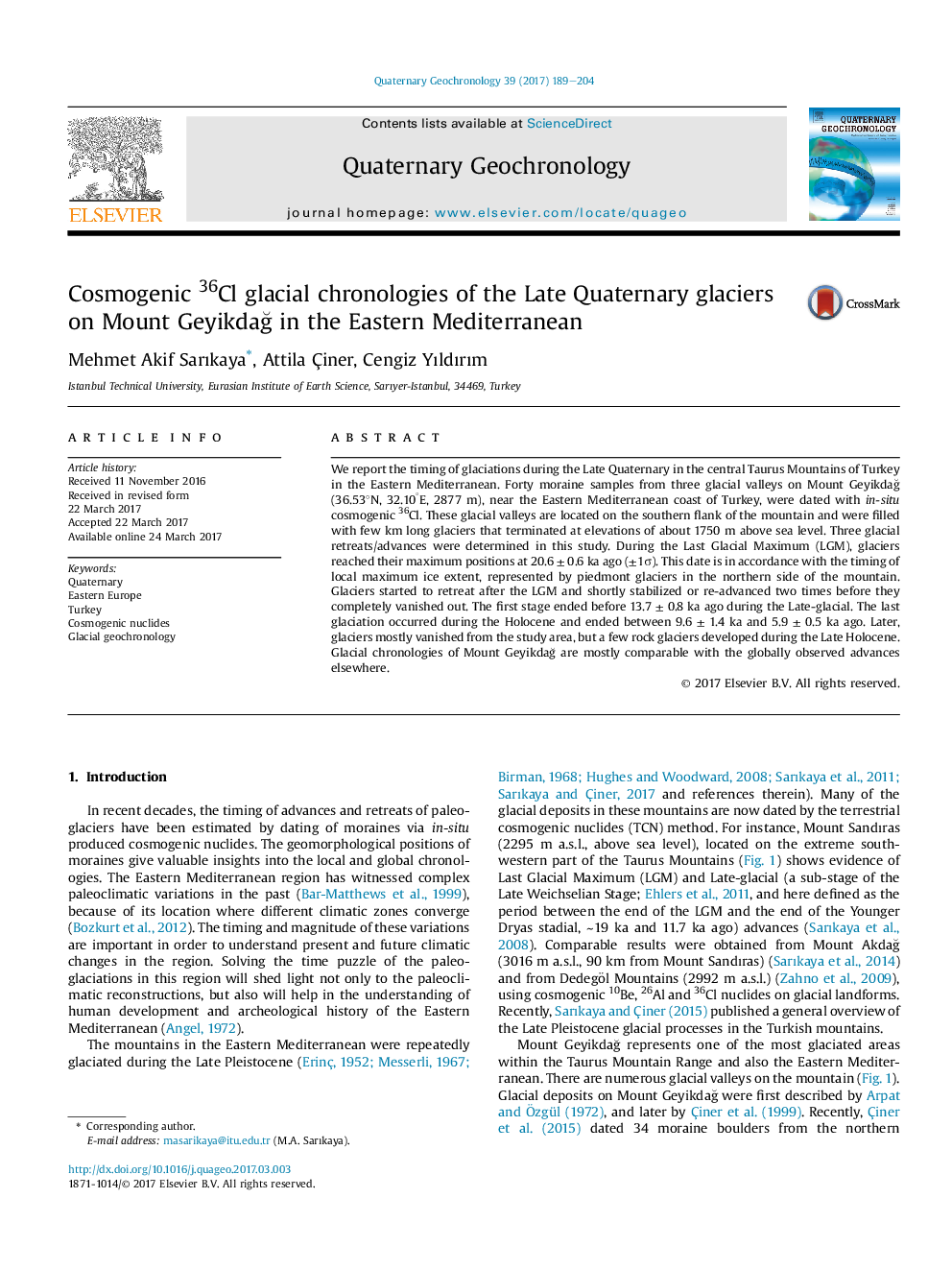| Article ID | Journal | Published Year | Pages | File Type |
|---|---|---|---|---|
| 5785003 | Quaternary Geochronology | 2017 | 16 Pages |
â¢Three glacial stages were identified by dating 40 samples with cosmogenic 36Cl.â¢Local-LGM occurred 20.6 ± 0.6 ka ago.â¢Late-glacial moraines were deposited by 14.9 ± 2.3 ka and 13.7 ± 0.8 ka ago.â¢Holocene moraines were dated to 9.6 ± 1.4 ka and 5.9 ± 0.5 ka ago.
We report the timing of glaciations during the Late Quaternary in the central Taurus Mountains of Turkey in the Eastern Mediterranean. Forty moraine samples from three glacial valleys on Mount GeyikdaÄ (36.53°N, 32.10°E, 2877 m), near the Eastern Mediterranean coast of Turkey, were dated with in-situ cosmogenic 36Cl. These glacial valleys are located on the southern flank of the mountain and were filled with few km long glaciers that terminated at elevations of about 1750 m above sea level. Three glacial retreats/advances were determined in this study. During the Last Glacial Maximum (LGM), glaciers reached their maximum positions at 20.6 ± 0.6 ka ago (±1Ï). This date is in accordance with the timing of local maximum ice extent, represented by piedmont glaciers in the northern side of the mountain. Glaciers started to retreat after the LGM and shortly stabilized or re-advanced two times before they completely vanished out. The first stage ended before 13.7 ± 0.8 ka ago during the Late-glacial. The last glaciation occurred during the Holocene and ended between 9.6 ± 1.4 ka and 5.9 ± 0.5 ka ago. Later, glaciers mostly vanished from the study area, but a few rock glaciers developed during the Late Holocene. Glacial chronologies of Mount GeyikdaÄ are mostly comparable with the globally observed advances elsewhere.
